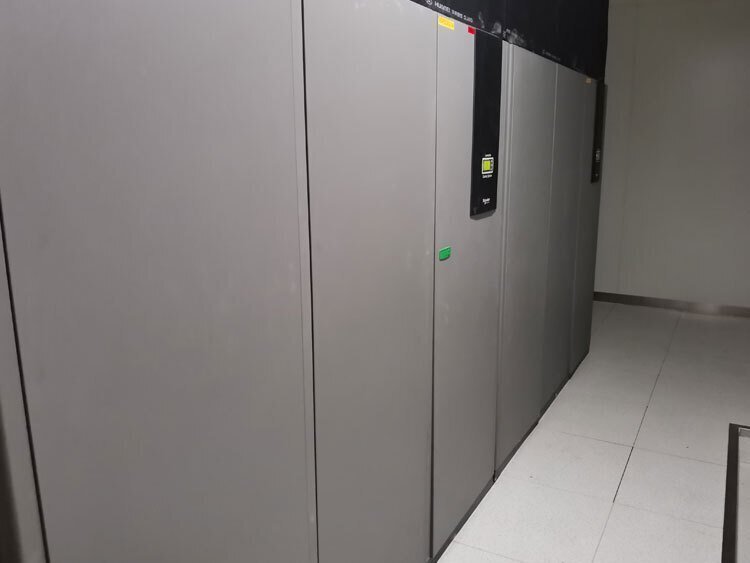This site uses cookies. Continuing to browse means you agree to our use of cookies.Cookies and Privacy Policy>![]()
This site uses cookies. Continuing to browse means you agree to our use of cookies.Cookies and Privacy Policy>![]()
Product dynamics of precision computer room air conditioning, UPS power supply, cold and warm dry wet, etc
Precision air conditioning, UPS power supply and other data center room products
Repair and maintenance of computer room air conditioning and precision air conditioning

Check Alarm Information
Read fault codes on the control panel (e.g., Emerson Liebert displays E1/E2 codes)
Review historical alarm records (at least 72 hours back)
Sensory Diagnosis
| Inspection Item | Normal State | Abnormal Signs & Possible Faults |
|---|---|---|
| Operating Sound | Smooth compressor hum (≤65dB) | Metal clanking → bearing damage; high-pitched squeal → refrigerant leak |
| Air Outlet Temp | Supply/return air ΔT: 6-10°C | ΔT < 4°C → clogged filter/low refrigerant |
| Pipe Frosting | Slight frost at expansion valve only | Full evaporator frost → filter blockage |
1. Refrigeration System
Pressure Test
Standard values: High pressure 1.5-2.0MPa, Low pressure 0.4-0.6MPa (R407C refrigerant)
Abnormally high pressure: Condenser clogging/cooling water failure
Abnormally low pressure: Expansion valve stuck/dry filter clog
Refrigerant Inspection
Use electronic leak detector (sensitivity ≥5g/year)
Refrigerant purity analysis (reclaim if moisture >100ppm)
2. Electrical System
Key Test Points
| Test Location | Normal Value | Abnormal Response |
|---|---|---|
| Compressor winding | Resistance balanced ±10% | >15% deviation → replace compressor |
| Contactor contacts | Contact resistance <0.1Ω | Pitting → replace & check starting current |
| VFD output | THD <5% | Excessive harmonics → check IGBT module |
3. Humidity Control System
Humidifier Check
Electrode type: Measure electrode resistance (new ≈50Ω)
Infrared type: Check quartz tube transmittance (clean if contamination >30%)
Humidity Sensor Calibration
Use standard salt solution (e.g., LiCl saturated solution)
Replace if deviation >±3%RH
Case 1: Frequent Low Pressure Alarm
Procedure:
Measure low pressure (<0.3MPa)
Check expansion valve opening (normal: 4-6 turns)
Apply hot towel to valve → pressure recovery indicates ice blockage
Replace dryer filter + vacuum >2 hours
Case 2: Compressor Overload Protection
Diagnostic Tree:
Check starting current → Abnormal → Test winding insulation (replace if <2MΩ)
↓Normal Check condenser fan → Stopped → Measure capacitor capacitance (replace if >10% deviation)
↓Normal Check refrigerant charge → Overcharged >10% → Reclaim and recharge
Predictive Maintenance Tools
Vibration analyzer: Detect compressor bearing wear (FFT spectrum analysis)
Thermal imager: Identify overheating electrical joints (ΔT >15°C = abnormal)
Cloud Monitoring Systems
Huawei NetEco predicts compressor remaining life (based on 5000+ parameter modeling)
Schneider EcoStruxure provides automated fault tree analysis
| Component | Inspection Item | Frequency | Tools Required |
|---|---|---|---|
| Air filter | Replace if ΔP >50Pa | Monthly | Micromanometer |
| Condenser | Fin cleanliness (light transmittance) | Quarterly | Endoscope |
| Refrigeration oil | Replace if acidity >1.0mgKOH/g | Biennially | Oil analyzer |
| Circuit boards | Check for swollen capacitors | Semi-annually | Magnifier + multimeter |
Reclaim refrigerant before high-side maintenance (EPA-certified equipment required)
Discharge VFD for >15 minutes before servicing (voltage <50V)
Calibrate humidity sensors in stable environment (temperature fluctuation <1°C/h)
Appendix: Quick Troubleshooting Flowchart
A[Alarm code] --> B{Temperature abnormal?} B -->|Yes| C[Check refrigerant/expansion valve] B -->|No| D{Humidity abnormal?} D -->|Yes| E[Calibrate sensor + inspect humidifier] D -->|No| F[Check electrical system] C & E & F --> G[Verify repair] G --> H[72-hour stability test]
This systematic approach resolves 90% of common faults. Quarterly preventive maintenance with complete logs is recommended. For complex faults (e.g., VFD explosion), contact OEM engineers.